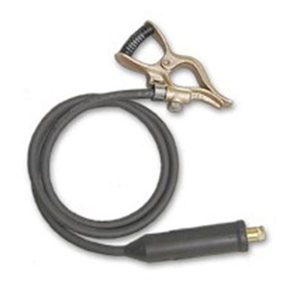
Stick welding offers an easy and effective way to join two or more metal objects. A form of arc welding, it involves the use of heat and a stick-based filler material. Contact between the electrode and the workpiece creates an arc, which melts the filler material. When performing stick welding, however, you’ll need to use a ground clamp.
Overview Ground Clamps
Ground clamps are electrical attachments that connect the workpiece to the welding machine. They are designed to complete the circuit so that an arc is produced. Without a proper ground clamp, the welding machine won’t produce the electrical arc needed to melt the filler material and fuse the metal.
How Ground Clamps Work
To better understand how ground clamps work, you must familiarize yourself with stick welding. Stick welding relies on an electrical arc to melt a melt filler. An electrical current will travel through the electrode, thereby creating an arc that melts the rod’s filler material. A ground clamp is an attachment that provides a pathway for the electrical current to travel between the welding machine and the workpiece.
Ground clamps consist of an electrical cable with a connector on one end and a clamp on the other end. To use them, you just need to attach the clamp to a metal surface so that the electrical current will have a low-resistance pathway. When the electrode touches the metal, it will create an arc. The electrical current produced by the electrode will travel to the metal surface while simultaneously creating a super-hot arc that can melt most metals.
The Importance of Proper Grounding
Failure to create a proper ground connection when performing stick welding can lead to several problems. Inconsistent arcs is one such problem that can occur. Like all forms of arc welding, stick welding requires a pathway for the electrical current produced by the welding machine. If the pathway is disrupted or broken, you may experience an inconsistent arc.
Excess spatter is another common problem of improper grounding. Spatter consists of hot, molten metal and filler material. Without a proper ground connection, the arc will become unstable, which can lead to excess spatter.
An improper ground connection is a safety hazard. The ground connection creates a pathway for the electrical current. Without this pathway, an electrical charge may build up and potentially cause a shock or fire.
